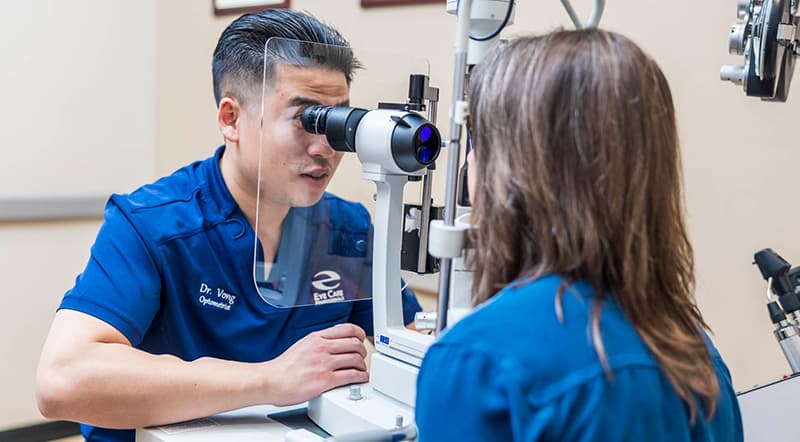Glaucoma Diagnosis: What You Should Know First
A glaucoma diagnosis can be a lot to process. It’s important to understand that glaucoma is a serious, progressive condition that can lead to permanent vision loss without treatment. However, the reality is that early diagnosis and diligent management offer a strong chance for individuals to protect their vision and enjoy a good quality of life for many years.
Taking informed action now is crucial for preserving your eyesight and feeling in control. This article outlines seven essential tips to help you navigate your new glaucoma diagnosis with confidence and clarity.
1. What Is Glaucoma?
Glaucoma is a group of eye conditions that damage the optic nerve, often due to elevated intraocular pressure (IOP). This nerve is essential for carrying visual information from your eye to your brain. There are multiple forms of glaucoma, but the most common is open-angle glaucoma, which develops slowly and without warning signs in its early stages. Unfortunately, once vision is lost, it cannot be restored — which is why regular screening and proactive management are vital components of glaucoma care.
2. Learn About Your Glaucoma Type
Not all glaucoma diagnoses are the same. Open-angle, angle-closure, normal-tension, congenital, and secondary glaucoma each have distinct causes and progression patterns. Your eye doctor will determine which type you have, along with the stage of the disease and the best treatment plan. Knowing your specific diagnosis helps you make informed decisions and understand what to expect over time. This knowledge also ensures that if surgical intervention becomes necessary, you’re prepared — including options like a glaucoma surgery for advanced cases.
3. Begin Treatment Right Away
Glaucoma can’t be cured, but its progression can be slowed significantly through treatment. That’s why it’s essential to start therapy as soon as possible. Depending on your condition, treatment may include medicated eye drops, oral medications, laser therapy, or surgery.
Selective Laser Trabeculoplasty (SLT) is often considered a first-line treatment and is known for being relatively painless and effective. SLT is a laser treatment for glaucoma that works by stimulating the trabecular meshwork, the eye’s natural drainage system, to improve fluid outflow and lower eye pressure. Other cases of glaucoma may require Micro-Invasive Glaucoma Surgery (MIGS). The MIGS procedures available at Eye Care Professionals include OMNI, iStent, and Hydrus implants, designed to effectively lower eye pressure.
Sticking to your prescribed regimen is non-negotiable — skipping medication could result in irreversible damage. If you’re having trouble remembering doses, consider using an app, alarm, or daily routine to stay on track. Effective management is a cornerstone of long-term glaucoma care.
4. Keep Up With Regular Eye Exams
After your initial glaucoma diagnosis, routine check-ups will become a part of your life. These visits allow your doctor to monitor your eye pressure, visual field, and optic nerve health. The frequency of exams will vary based on the severity and stability of your condition, but consistency is key. Delaying or skipping appointments puts your vision at unnecessary risk. With consistent monitoring and updated assessments, your provider can quickly identify changes and adjust your treatment plan as needed — all part of proactive reno eye care.

5. Stick to Healthy Lifestyle Habits
Supporting your overall eye health involves more than just medications. A nutritious diet rich in antioxidants, leafy greens, and omega-3 fatty acids can promote eye wellness. Regular physical activity may help reduce eye pressure naturally. Avoid smoking, which can impair blood flow to the optic nerve, and drink caffeine in moderation as it may increase intraocular pressure. Protect your eyes with UV-blocking sunglasses, and limit screen time if it causes strain. These small daily choices support your treatment and may help slow the disease.
6. Communicate With Your Eye Doctor
Your relationship with your ophthalmologist or optometrist should feel like a partnership. Don’t hesitate to speak up about symptoms, side effects, or any difficulties following your treatment plan. If you’re experiencing discomfort from eye drops or noticing changes in your vision, those are important signals to share. Your doctor may adjust dosages, recommend alternatives, or explore other treatment paths like surgery or a glaucoma implant. Open communication ensures your treatment plan stays as effective — and comfortable — as possible.
7. Seek Support and Stay Informed
Glaucoma can be isolating if you try to manage it on your own. Fortunately, you don’t have to. Support groups — online and in-person — offer encouragement, advice, and community. Talking with others who understand what you’re going through can ease anxiety and provide insight. Staying educated is equally important. Subscribe to credible resources like the Glaucoma Research Foundation or the American Academy of Ophthalmology for the latest developments in glaucoma care. The more informed you are, the more empowered you’ll feel.
Moving Forward After a Glaucoma Diagnosis
A glaucoma diagnosis may feel overwhelming at first, but it doesn’t mean losing control of your future. With early treatment, regular monitoring, and healthy habits, you can slow the disease’s progression and protect your vision. Stay informed, follow your care plan closely, and lean on your support system — these steps make all the difference in long-term eye health.
Take control of your vision with Eye Care Professionals Reno. At Eye Care Professionals, we provide expert support for managing glaucoma and preserving your sight. Don’t wait — contact us today!











